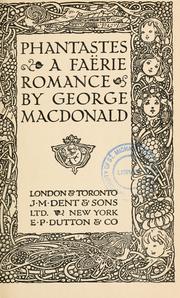


Some people like to date Fantasy as starting with Tolkien, some like to reach back to the tales of the ancient world, but I like to split the difference and start with Beowulf. In terms of historical reach, the Anglo Saxon world is barely a stone’s throw from us today, and you can see the long reach of that language and culture in both Tolkien’s work specifically and in the tropes of modern Fantasy more generally. Beowulf itself possesses all the hallmarks of what we think of as the classic adventure story: the scary monster, the noble hero, the epic quest, lots of fight scenes, and then the changing of the guard from the old age to the new. It’s great stuff, and it’s no surprise that if you step into a classroom of Old English students, most if not all of them are going to be vocal Fantasy aficionados.
Around five hundred years later, Sir Thomas Malory wrote Le Morte d’Arthur, providing the first core text to the fine tradition of Arthuriana. We get a Round Table, idealized knighthood, chivalry, derring-do, and of course, the love triangle of doom. Starting in the nineteenth century, most every genre author of note will be compelled to add something to this body of sub-genre, for reasons.
The Renaissance provides an interesting hodge-podge of texts we’ll have to discuss more in depth at a later date: Thomas Moore wrote Utopia and people have been fascinated with it—and dystopias—ever since. Edmund Spenser wrote his unfinished epic poem, The Faerie Queene, which also celebrates chivalry, Queen Elizabeth, and the awkward political parable. (I remember when I figured out that the virtuous knight Red Cross was meant to symbolize England because hey! England’s flag is a Red! Cross!) Margaret Cavendish’s The Blazing World combined talking animal fables with proto-feminism and scientific inquiry. The eighteenth century introduced the popular fairy tale and gothic genres.
The nineteenth century is where we pick up a lot of the basics for what we talk about when we talk about Fantasy (and Science Fiction, for that matter) when we aren’t talking Old English epics. Mary Shelley gives us Frankenstein and Jane Webb Loudon gives us The Mummy. Hans Christian Anderson writes both “The Little Mermaid” and “The Steadfast Tin Soldier” and some of us (definitely not me, nope, never) never stop crying. Between John Polidori, Sheridan Le Fanu, and Bram Stoker, we get the popular vampire narrative pre-sparkles.
George MacDonald is going to round out this first section on history. In terms of sheer influence, MacDonald is the genre forerunner to both Lewis and Tolkien, but in the nineteenth century he was everyone’s best friend—I say this jokingly, but there’s an element of truth to it. He was Lewis Carroll’s mentor, he ran in the same circles as Tennyson and Dickens in Britain and Longfellow and Whitman in the US. His theological beliefs grounded his literary work, especially his tales for children. Lilith is perhaps his best known work, and you could safely give it to kids if you, y’know, wanted them to have issues forever. (Kinda like Lewis’s The Last Battle.) A guy travels to a parallel world, leads the Little Ones or supernally pure children against Adam’s first wife, falls in love with one of them (don’t think about it), then happily goes to sleep (dies) so he can live his real life in the hereafter.
Look, it was the nineteenth century, okay, and Lewis was this guy’s fanboy for a reason. Phantastes is his other most celebrated work. Subtitled A Faerie Romance for Men and Women, the hero goes from our world to the faery world and has numerous adventures before dying there and awaking here, thus giving you that brutal one-two of both heavy Christian allusion and good ol’ Green World. Again, Lewis was a fan, and it shows.
Next time, we’ll continue with the Nineteenth Century and into the Twentieth. Howard, Tolkien, Gygax—oh my!











I don't know if you're planning on mentioning Lin Carter's Adult Fantasy series that he edited for Ballantine Books in the late 60s and early 70s, but that series would probably form a good starting point for reading. Carter wrote a history of fantasy, Imaginary Worlds, as part of the series. The series contained both the MacDonald titles you mentioned, plus Evenor, a collection of three shorter pieces by MacDonald. Then there were volumes by William Morris, William Hope Hodgson, Dunsany, Cabell, and others.
Oh that's a good idea!! I knew that series existed but it didn't occur to me to think of it as a "curriculum" of sorts! *G*
I definitely agree that Macdonald's writing is woefully underrated, especially his two adult novels. His children's fantasy books are also fairly good, but a little bit "sugary" for my taste, if you know what I mean.
As a minor bit of trivia, it was one of George MacDonald's children who, by his enthusiastic comments, convinced Lewis Carroll that his handwritten book "Alice's Adventures Underground" should be published.
Isn't it funny all the little stories that get tied up together? There's a great book by thomas Disch called "Neighboring Lives" that's about the various literary circles of the 19th c.–the pre-Raphaelites, the Romantics, everyone–and how they all knowingly or unknowingly overlap. I've always wondered about the genre equivilant of such a book!!